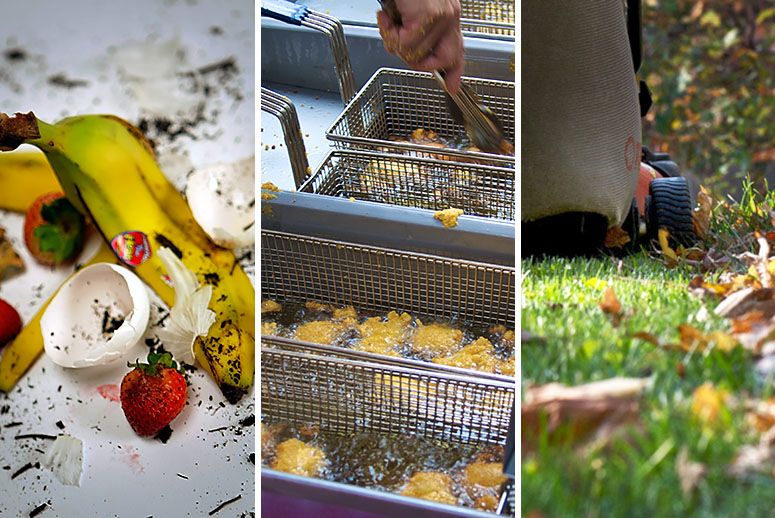HERE’S HOW 180,00 TONS OF FOOD WASTE WILL SKIP THE LANDFILL

An anaerobic digester facility will help reduce the amount of refuse that’s piling up in garbage dumps in the New York metropolitan area.
(Photos: Kirk McKoy/Getty Images; Dan Dickinson/Flickr; Flickr)
Sep 3, 2015
Staff Writer Liz Dwyer has written about race, parenting, and social justice for several national publications. She was previously education editor at Good.
Newspapers, cans, bottles, batteries, and your old clothing—those are just some of the items that recycling helps keep out of the world’s landfills. Now, thanks to a gigantic anaerobic digester plant that’s set to be constructed on Long Island, New York, enormous amounts of food waste will be recycled, reducing greenhouse gas emissions and generating energy.
On Tuesday, New York Gov. Andrew Cuomo announced that a 62-acre plant will be built in Yaphank, about 60 miles east of New York City. The facility will be able to keep 180,000 tons of waste out of area landfills, including 120,000 tons of food trash—discarded banana peels, eggshells, even a can of half-eaten tuna—as well as 30,000 tons of fat, oil, and grease from area restaurants. That dwarfs the 500 tons of waste that a small anaerobic digester plant in Brooklyn processes per year, according to Capital New York.
Instead of heading to a landfill, sanitation trucks will haul the refuse to the plant. Once there, plastic, metal, and paper will be separated out first. The remaining biodegradable materials will be put into eight oxygen-free tanks, where they’ll sit for a month as microorganisms break them down.
Future anaerobic digester complex in Suffolk County, New York. (Photo illustration: Courtesy USBiopower.com)
The end result is biogas, which can be turned into fuel. A similar process, but using small amounts of cow manure, was used to power a bus in the U.K. earlier this summer. But the size of the Long Island plant ups the renewable energy ante.
According to a press release, the plant will “reduce greenhouse gas emissions by approximately 40,000 tons annually, equivalent to removing 8,125 cars from the road.” It will also generate 2.0 megawatts of electricity—enough to power 400 homes—and the compressed natural gas equivalent of approximately 1.9 million gallons of diesel. Oh, and the plant will also be able to power itself.
A 2012 study from the World Bank found that the planet generates about 2.6 trillion pounds of garbage per year, and more than half of that ends up in landfills. Cutting the amount of stuff restaurants and grocers throw in the garbage in the first place is key to keeping food out of landfills too. A 2014 report from the Food and Agriculture Organization of the United Nations found that about 1.7 billion tons of food—about one-third of all food produced today—is lost or wasted as it makes its way along the food chain.
With that in mind, in July, Jordan Figueiredo, a sanitation worker and “ugly” produce champion in the San Francisco Bay Area, launched a Change.org petition asking Walmart and Whole Foods to stock imperfect fruits and veggies and sell the items at a discount. An experiment from a grocery chain in France found that consumers will snap up disfigured produce if it’s less expensive—and if it is properly marketed to them.
Construction on the plant in New York is set to begin later this year; it is expected to be completed in 2016. “This is a game changer,” Charles Vigliotti, president and CEO of American Organic Energy, the company behind the project, told Capital New York. “We’re going for the gold standard in how you process food waste in a civilized world.” Vigliotti said the company has been consulting with restaurants and supermarkets about processing their food waste. “We’re not at all concerned with our ability to fill up this plant. There’s more than enough food waste on Long Island,” he added.







Follow Us!